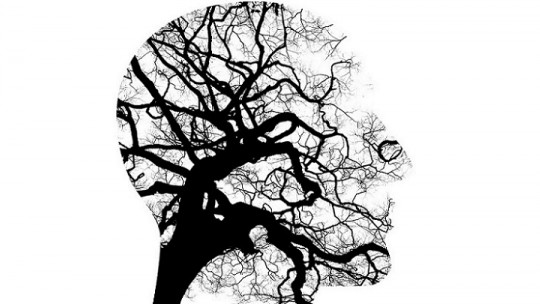
The concept of mentalization has aroused a lot of interest in the field of mental health, neuroscience or philosophy, among other areas of research and knowledge about human beings from different perspectives, being a concept that is fundamentally used when it comes to refer to the process by which a person makes sense of others and themselves.
Mentalization-based therapy (MBT) is a model of psychotherapy that is rooted within the framework of psychodynamic therapies and was initially developed as a treatment for adults with borderline personality disorder (BPD), although a new version of this treatment focused on adolescents (TBM-A).
In this article Let’s see what therapy based on mentalization consists of but first we are going to talk introductoryly about the concept of mentalization seen from the field of psychotherapy.
What is mentalization?
The word “mentalize” could be defined as the ability that people usually possess to perceive and interpret different behaviors and associate them with different intentional mental states, based on the idea that people’s mental states influence their own behavior. Therefore, we could say that mentalization is a capacity that the human being has to mentally make a representation about himself; that is, of his own self, seen as an active agent, which allows him to have the idea that he is the owner of his thoughts and behaviors.
The concept of mentalization has been used in the field of psychology and psychotherapies fundamentally to refer to that ability of people to make an interpretation about their own actions, as well as other people based on a series of subjective psychological or mental states (feelings, thoughts, desires, etc.). Furthermore, mentalization serves to try to understand the close relationship between people’s own behaviors with respect to these mental states.
On the other hand, mentalization is very important for each person’s own self-regulation and also for them to be able to have close or intimate relationships with other people in a healthy and constructive way, and it is characteristic that these are deteriorated in those people who suffer from a mental disorder. of personality because in this type of cases it is common that they tend to lose their own capacity for mentalization in difficult moments in which anxiety and stress, among others, could arise.

It should be noted that researchers in this field have managed to observe, through brain scans, a relationship between the deactivation of mentalization and the activation of the attachment system, since those areas of the brain that are associated with attachment inhibit activity in those tasks in which there is a connection with cognitive control, which could include those that are associated with mentalization; Furthermore, this capacity is not innate but should be developed through a secure attachment context during childhood.
However, the theory that talks about the relationship between borderline personality disorder and disorganized attachment has not been able to provide an explanation about the etiology or genesis of this disorder, despite the fact that there are various studies in which it is has been able to demonstrate a greater prevalence of insecure attachment in patients with borderline personality disorder compared to people who do not suffer from said disorder, with an association between loss or difficulty in mentalization and different interpersonal problems, emotional instability, violence and impulsiveness.
On the other hand, it should be noted that mentalization is a capacity that has different dimensions, among which we can find the following: cognitive-affective, implicit-explicit, self-other, internal-external. When the balance is unbalanced in the direction of one of these opposite poles, different problems could occur, as is usually characteristic of some psychopathologies.
What is mentalization-based therapy?
The psychoanalysts Anthony Bateman and Peter Fonagy have been the main precursors of therapy based on mentalization, who developed it in order to address some difficulties associated with borderline personality disorder through psychological treatment, maintaining that people with a disorder People with borderline personality have a deterioration in their ability to mentalize or, in many cases, this ability may even be non-existent.
Bateman and Fonagy have come to highlight that the difficulty in mentalizing people with borderline personality disorder It is a key factor in their mental illness, which is why in their therapeutic model they have placed special emphasis on work when trying to develop, promote and optimize the use of this capacity that is so important for human beings, as we will see. in the article later when we talk about the different phases of which therapy based on mentalization is composed and the techniques that are most commonly used by therapists.
The phases of psychotherapy based on mentalization
Mentalization-based therapy (TBM) is generally composed of 3 main phases divided over several sessions and starting with an evaluation process in individual format, which is followed by a phase through several psychoeducation sessions in group format. , to then move on to individual sessions with each of the patients that make up the group.
Therapy based on mentalization has been widely studied in recent years, having shown promising results; However, more studies are still needed, especially with clinical trials that are randomized and controlled. Even so, this therapy already has a high degree of recommendation for the psychological treatment of borderline personality disorder it is also necessary and interesting that more research be carried out with other types of personality disorders.
Below we are going to briefly explain the 3 major phases between which the therapy based on mentalization is mainly divided, exposing the main objectives and techniques used throughout each of them.
1. The initial phase
This initial phase is developed in an individual format and the main objectives pursued throughout the first sessions are the following:
On the other hand, the techniques most often used in this initial phase are: use by therapists of active listening, carrying out an analysis of relational and interpersonal patterns, as well as their dynamics, and an analysis of the patients’ stories about different situations, both emotional and social.
2. The middle phase
It should be noted that the middle phase of therapy based on mentalization is usually carried out through several sessions, both in group and individual formats in a combined manner, being a phase in which it is essential to achieve strengthen the therapeutic alliance between the patient and the psychotherapist as well as promoting patient mentalization.
Throughout the middle phase of this therapy, various therapeutic techniques are usually used, such as the following: the “stop, listen and look technique”, the “stop, rewind and explore technique”, the “clarification and challenge” or reassurance and empathy on the part of the psychotherapist, among others.
3. The final phase
The final phase is developed fundamentally through individual sessions, being a phase in which the therapist will help the patient maintain the achievements achieved both throughout the therapy and in the period between sessions, in addition to preparing for the end of the treatment, paying special attention to the patient’s possible feeling of loss after the conclusion of the sessions.
In this final phase, it is important to highlight the following techniques, as they are the most used by the psychotherapist during this period: firstly, an analysis is usually carried out about the patient’s current interpersonal or relational patterns and, secondly, The technique of mentalization about transference and countertransference is used.








